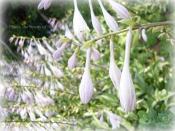Hydroponics is the growing of plants without soil. It was developed from the findings of experiments carried out to determine what substances make plants grow and the composition of plants. This dates back as early as the 1600s. Plants were being grown in a soil less culture far earlier than this. There were hanging gardens in Babylon, floating gardens of the Aztecs of Mexico, and the Chinese also had methods that were examples of "hydroponics" culture. Egyptian hieroglyphic records dating back to several hundred years B.C. described the growing of plants in water.
The earliest recorded scientific approach to discover plant constituents was in 1600 when Belgian Jan van Helmont showed in his classical experiment that plants obtain substances or nutrients from water. He planted a 5-pound willow shoot in a tube containing 200 pounds of dried soil that was covered to deep out dust. After five years of rainwater, he found the willow shoot increased in weight by 160 pounds, while the soil lost less than two ounces.
His conclusion that plants obtain substances for growth from water was correct. However, he failed to realize that they also require carbon dioxide and oxygen from the air. In 1699, an Englishman named John Woodward grew plants in water containing various types of soil and found that the greatest growth occurred in water, which contained the most soil. He then concluded the plant growth was a result of certain substances in the water, derived from soil, rather than simply from water itself.
Further progress in identifying these substances was slow until more sophisticated research techniques were developed and advances were made in the field of chemistry. In the year 1840, De Saussure proposed that plants are composed of chemical elements obtained from water, soil, and air. Boussingault verified this proposition later...


